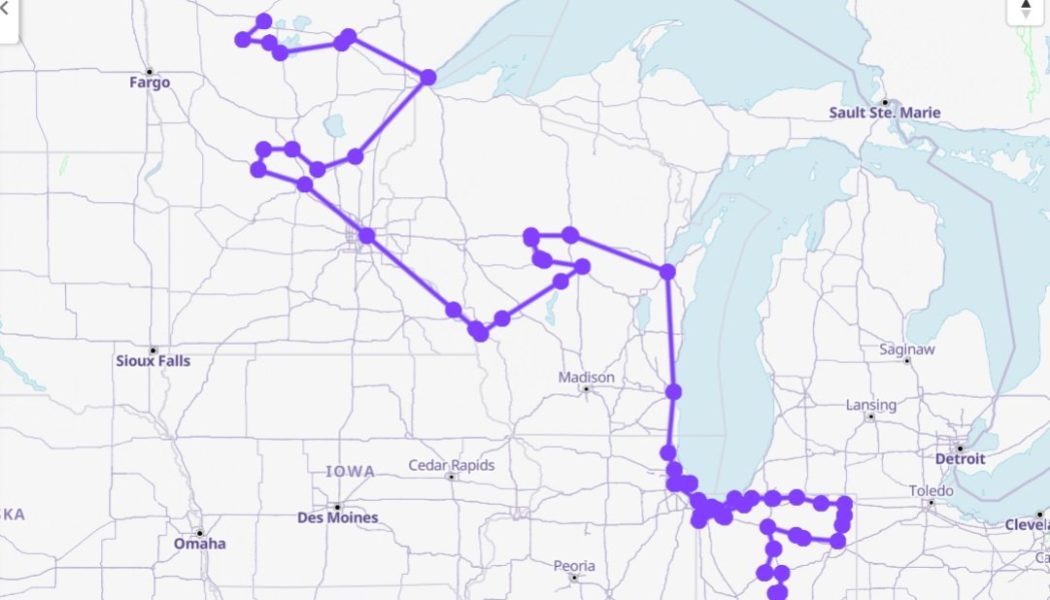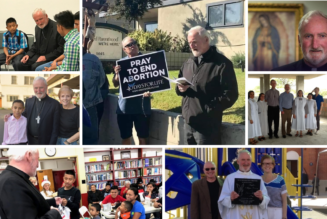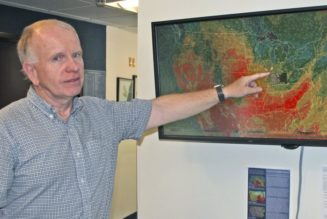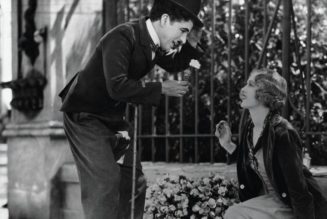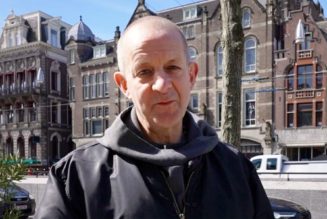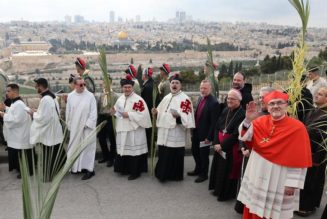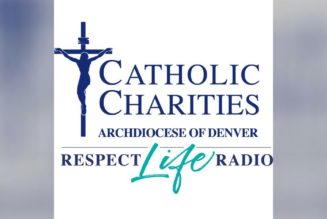Midwesterners are used to being overlooked. After all, this is the part of the U.S. known as “flyover country” by coastal denizens. Even the region’s most prominent metropolis, Chicago, is known as “The Second City,” a nickname that originated as a put-down, made by a visiting journalist from the nation’s “first city,” New York.
To put it in familial terms, the Midwest is the nation’s disregarded middle child, less elite than the elder East, not as cool as the younger West, and far more unassuming than the charming (though sometimes-rebellious) South.
But Catholics know that being overlooked in the eyes of the mighty often coincides with finding favor with God, who chooses “the lowly and despised of the world, those who count for nothing, to reduce to nothing those who are something” (1 Corinthians 1:27). This divine tendency is epitomized in the pinnacle of his creation: Mary, the virgin who became the Mother of God, the lowly handmaiden from a provincial backwater who is now rightfully hailed as the Queen of the Universe.
And it has also played out in the Midwest — making it fitting that the only National Eucharistic Pilgrimage route to originate in and pass solely through the region is named for the Blessed Mother.

Because, like Mary, this humble, lowly part of the country has been used by God to magnify his glory and bless the world — a truth highlighted by so many stops along the “Marian Route” as it runs through Minnesota, Wisconsin, Illinois and Indiana May 17-July 16.
This includes the only place in the United States where the Blessed Mother is officially known to have made an appearance: Champion, Wisconsin. Here, in the northeast corner of the state, the Virgin Mary appeared to a young Belgian immigrant named Adele Brise in 1859, telling her to “gather the children in this wild country and teach them what they should know for salvation.” (Locals will tell you that Mary’s visit was a sign that the Lord would give the community another blessing 60 years later — the Green Bay Packers.) Formerly dedicated to Our Lady of Good Help, the National Shrine of Our Lady of Champion will host Mass, adoration and a procession for the Eucharistic Pilgrimage on June 16.

Wisconsin is also home to another place of Marian devotion (and pilgrimage stop on June 8), the Shrine of Our Lady of Guadalupe, just outside of La Crosse. Mary’s apparent fondness for the Badger State likely has something to do with why residents call it “God’s country” — though that could also be due to Wisconsin being the home of the Culver’s burger and frozen custard chain, or being a major source of — if not the honey — at least the milk that marks out the Promised Land.
Another highlight along the route that bears a distinctly Marian imprint is the University of Notre Dame where the pilgrimage will stop July 5-7 for multiple Masses, an academic panel, and a Eucharistic procession across campus. From its humble beginnings in frontier Indiana, the Congregation of Holy Cross-run institution has arguably become the most impactful Catholic university in the world.
Although Notre Dame’s fidelity to its Catholic mission is a cause of ongoing concern, Our Lady’s university is still, as Father Theodore Hesburgh once put it, “a place where the Church does its thinking.” The university is home to leading Catholic institutes like the de Nicola Center for Ethics and Culture, Notre Dame Law School, the Fitzgerald Institute’s Church Properties Initiative, and the McGrath Institute for Church Life, as well as the nation’s largest pro-life student group and more than 200 on-campus Masses each week.
And while Notre Dame certainly can no longer be called “poor,” there is still something appropriately Marian about the renowned university existing in the midst of sleepy, simple South Bend. With Father Robert Dowd set to become the university’s new president this summer, perhaps the Eucharistic Pilgrimage’s presence on campus will help spark a revival at Notre Dame.
Five hundred miles farther back along the pilgrimage route, you can find another instance of Midwest Catholicism punching above its weight. Minnesota’s Twin Cities of St. Paul and Minneapolis have given rise to national ministries like Saint Paul’s Outreach and NET Ministries, and, at least at one point, had the most perpetual adoration chapels in the country.
The nation’s first-ever “Catholic Studies” program can be found at the archdiocesan University of St. Thomas, which the pilgrimage’s “Source and Summit Eucharistic Procession” will pass through on May 27 on its way to the Cathedral (and national shrine) of St. Paul. In fact, Modern Catholic Pilgrim, the apostolate helping to organize the entire National Eucharistic Pilgrimage, is also based in Minnesota’s capital city.

As it stands, the Land of 10,000 Lakes currently possesses an embarrassment of Catholic evangelical riches: Bishop Robert Barron of Word on Fire Ministries acclaim is the ordinary of the Diocese of Winona-Rochester (where the pilgrimage will be May 31-June 7); dynamic evangelist Father Michael Schmitz is based at a Newman Center in the Diocese of Duluth (May 20-24); and Bishop Andrew Cozzens, the U.S. bishops’ evangelization and catechesis chair and the chief architect of the National Eucharistic Revival, leads the Diocese of Crookston (May 17-21). Along with all the bishops of Minnesota, Wisconsin and the Dakotas, the three will take part in the Star of the North Eucharistic Congress, May 17-18 in Bemidji, Minnesota, to kick off the Marian Route.
Not bad for a state that’s best known nationally for Prince, the Mall of America, and people who talk like the characters in the movie Fargo.
The Midwest is defined by its farmlands and rural communities, so, fittingly, the route named after the woman known as Our Lady of the Harvest will visit several of them. Not only will the Marian Route pass through Indiana cornfields, Wisconsin cow pastures, Illinois soyfields, and along the Minnesota lakes where wild rice is grown, it will also make frequent stops at the parishes that serve these rural communities. A special “Blessing of Farmers and Agriculture” will be held by the Diocese of Lafayette in Tipton, Indiana, on July 12.
America’s heartland, as the Midwest is often called, helps to nourish the nation physically, but the rural communities of the Midwest also play an outsized role in feeding the nation’s soul. Cardinal Timothy Dolan — ironically of New York, but born and raised in St. Louis — once noted this broader impact of the Church in the Midwest.
“Most of the wisdom and genius of the Catholic Church in the United States came from the people in the small dioceses of the farmlands of America,” he told Catholic Rural Life, a 100-year-old ministry based in Minnesota. Cardinal Dolan highlighted in particular wellsprings of renewal like the Catholic liturgical movement, which was founded in the U.S. by the Benedictine monk Virgil Michel of St. John’s Abbey in Collegeville, Minnesota, and the quality of priestly vocations from the Midwest, which will be a focal point at pilgrimage stops like the St. Paul Seminary in Minnesota and Illinois’ Mundelein Seminary.

But the Midwest isn’t just cowpies and cornfields. It’s home to some of America’s largest cities, including Eucharistic Pilgrimage stops like Milwaukee and Chicago, and final destination Indianapolis.
These cities were built up by immigrants, a reality that is still true today and will be evident along the Marian Route. The Archdiocese of Chicago, which is home to a national shrine of the immigrant saint Frances Xavier Cabrini, will hold Eucharistic celebrations with its Asian, Polish and Latino communities; and in Minneapolis, a Eucharistic procession will make its way through Northeast, the historically Catholic part of the historically Protestant city, where Latinos and West Africans go to Mass in churches originally built by Slovaks and Germans.
African American Catholic communities in St. Paul and Chicago will also host dedicated celebrations, especially fitting given that Venerable Augustus Tolton, the first Black man ordained in the U.S. and possibly the first African American to be canonized, spent his life and ministry in the Midwest..
Of course, the Eucharistic Pilgrimage will also be a time to highlight so many of the cultural achievements and natural wonders that glorify God and make the Midwest such a beloved place.
The Northwoods of Minnesota, the river bluffs of Wisconsin, and the shores of Lake Michigan will provide the backdrop along the Marian Route, as will important cultural landmarks, like the world-famous Mayo Clinic in Rochester, Minnesota, and Chicago’s sky-scraping financial district. But before all of that, the Marian Route will begin with Pentecost Mass at the humble headwaters of the mighty Mississippi River, a fitting image for the Marian character of Catholicism in the Midwest, including states not along the route, like Iowa, Ohio and Missouri.
Like Mary’s fiat, the river begins simply and purely, allowing itself to become something mighty in order to bless those downstream. The same can be said of missionaries like Fathers Louis Hennepin and Jacques Marquette, Native American Catholics such as Mother Mary Catherine, Sacred White Buffalo and Nicholas Black Elk, and immigrant Church leaders like Archbishop Peter Richard Kenrick and Bishop Joseph Crétin, whose “Yes” allowed the Catholic faith to spring up in the Midwest.
Now, filled with the Holy Spirit and modeled after the Blessed Mother’s openness, the National Eucharist Pilgrimage’s Marian Route is likely to continue Midwestern Catholicism’s long legacy of being an overflowing source of grace and renewal for the Church and the world.
